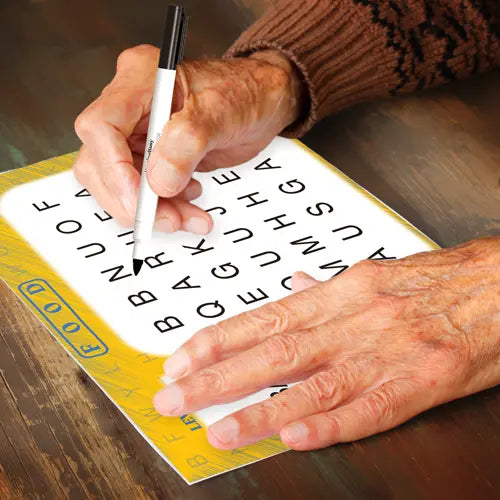
When you look at t he cartoon, what is your first thought? Do you think
- It’s funny
- It makes sense
- I know someone who does that
- He can’t do that!
It's a funny cartoon, but if we think about what it depicts, we can learn from it. One of the most important lessons we teach in our training is to observe the person and try to determine why a particular behavior is occurring and what we can do to prevent or modify it. To do that, we have to answer questions about the behavior.
DOES THE BEHAVIOR NEED TO CHANGE?
The first question that we need to consider is "does the behavior need to be changed or stopped"? We may view something as inappropriate, but is it really? If the behavior can cause harm to the person or others, then the answer is obviously "yes", but sometimes it isn't as clear cut. One example of such a behavior is a resident who insists on wearing the same sweater every day. It may not be a behavior that you particularly approve of, but is it harmful and does it need to be addressed?
WHY THE BEHAVIOR?
Once we have determined that the behavior should be addressed, the next question we need to answer is "why is the behavior occurring"? When asked why he is working on the bed, some of the responses that you may get are
- The bed is too high and he wants to lower it
- The bed isn’t working and he thinks it needs a tune up
- He wants to figure out how it works
Even though the responses are different, it is possible that the problem is that the bed is too high (or too low) and the person has different ways of expressing the problem. Another possibility is that the person is bored and/or lonely and this is their way of dealing with it.
To help the person be able to adjust the bed on their own, demonstrate how the controls work and make signs reinforcing the demonstration to support his memory loss. Tell him that when he wants to adjust the bed he should look at the sign and use the controls.
If the person is exhibiting the behavior because they are bored or lonely it is likely a recurring behavior and we need to determine what triggers it.
For example, ask "when it is happening"?
- After his wife leaves each afternoon
- At a particular time of day: in the morning, after lunch, in the late afternoon, at night
- At unpredictable times
Equally as important is "when is it not happening"?
- At particular times of the day: in the morning, at night
- After going for drive with his wife
- After a meal
Another relevant question is "what is different when it is happening versus when it isn’t happening"?
HOW DO WE CHANGE IT?
The answers to these questions, tell you when to engage the person, which ideally would be prior to the behavior occurring.
Some suggested solutions if the person is bored include
- Bring in something mechanical that is “broken” that he can tinker with
- Based on his interests, give him something to do
- jigsaw puzzle
- word puzzle
- personal music
- Go for a walk
- Sit down and spend some time talking to him
The important point is that when we observe a behavior that we feel needs to be addressed, rather than reacting spontaneously, take the time to determine why the behavior is occurring and only then develop a solution to prevent or modify it.




